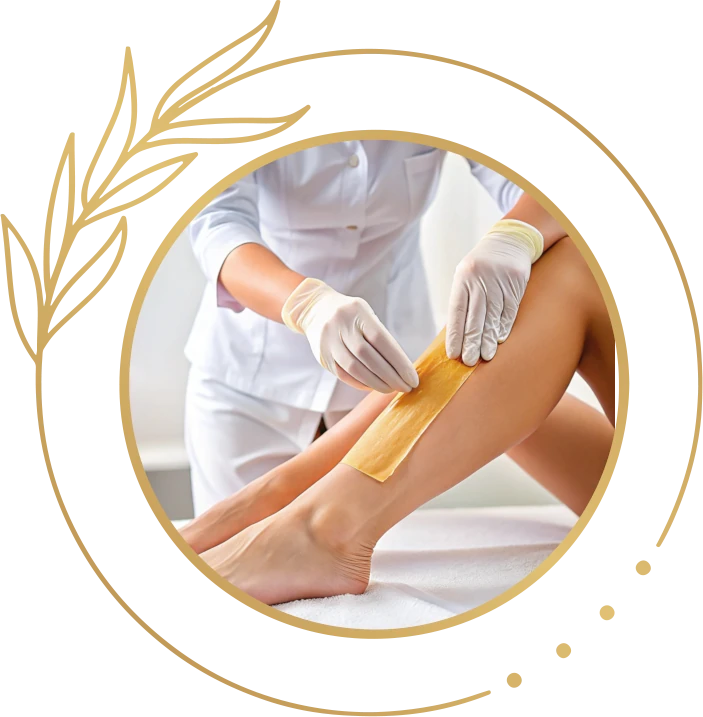Nature
WaxingWAXING: Everything you need to know
 For optimal results, your hair should be at least 1/4 inch to 1/2 inch long. If you have coarse hair, aim for 1/2 inch during the first few waxes. Once the hair becomes finer, it can be waxed at a shorter length. If your hair is longer, it's recommended to shave the area and book your waxing appointment for two to three weeks later.
For optimal results, your hair should be at least 1/4 inch to 1/2 inch long. If you have coarse hair, aim for 1/2 inch during the first few waxes. Once the hair becomes finer, it can be waxed at a shorter length. If your hair is longer, it's recommended to shave the area and book your waxing appointment for two to three weeks later.
It may take up to three waxing sessions to achieve smooth skin, as hair grows in cycles and not all hair is at the same stage. It's crucial to avoid shaving between appointments, as this disrupts the process and stimulates hair growth. Plan your waxing treatments in advance, if you’rewant to be hair free while you’re away you need, for the best results.
90min £85
Full Legs £25
Half Legs £15
Under Arms £7
Upper Lips £5
Eyebrows £7
Standard Bikini £12
Chest £25
Chest & Back £35
How often should I get my waxing treatment?
It is recommended to get waxing treatments every four to five weeks. Regular waxing helps reduce sensitivity of the skin as it becomes accustomed to the process. Over time, the hair follicle grips the hair less, making the hairs easier to remove. Frequent waxing can also result in less hair growth over time.What should I expect after my first waxing treatment?
You can expect smooth, hairless skin! However, everyone’s skin reacts differently to waxing, so temporary redness and mild irritation may occur for a day or two. Slight itchiness may also be felt as the hair begins to grow back. Proper post-wax care will help soothe these symptoms quickly.If you're a bride, attending a special occasion, or going on holiday, it’s best to have your first waxing treatment about a month before the event to see how your skin reacts. If all goes well, you can schedule another session a few days before your special day.
Will I get ingrown hairs?
It’s possible. Waxing removes the entire hair, including the root, from the follicle, which can sometimes lead to ingrown hairs. To help prevent this, it’s important to keep the area gently exfoliated. Use a mild scrub about two days after waxing and continue exfoliating 1-2 times a week. Remember, it should be gentle!You can also apply a mixture of tea tree and lavender oil, as both are antimicrobial and antibacterial, helping to prevent irritation.
For a few days after waxing, wear loose-fitting clothes to allow your skin to breathe and reduce moisture. Areas like the bikini line, lips, and underarms are more prone to perspiration, which can lead to bacteria growth. Since the hair follicle is open after waxing, bacteria can more easily enter.
It’s also advisable to avoid heavy exercise that causes excessive perspiration and chafing for about 24-48 hours after waxing.
How can I prevent ingrown hairs?
For the first 24-48 hours after waxing, avoid the following on the waxed areas:- Exfoliating products: Avoid Alpha-Hydroxy Acid (AHA) products, loofahs, scrubs, and other exfoliants.
- Direct sun exposure and tanning beds: These can irritate freshly waxed skin.
- Fragrant creams: Avoid products with fragrances or irritating ingredients.
- Deodorant: It can clog open follicles and cause irritation.
- Tight clothing: This can cause friction, irritation, and inflammation.
- Excessive heat: Avoid hot tubs, saunas, or very hot showers—warm showers are fine.
- Exercise: Any activity that causes chafing or sweating should be avoided.
- Touching the waxed area: This can lead to irritation.
After 24-48 hours, you can start regular exfoliation with a shower gel and loofah or exfoliating glove to keep your skin soft and prevent ingrown hairs. Be sure to apply SPF 30 or higher sunscreen to any exposed areas. Waxing removes the top layer of skin, leaving it more sensitive to sun exposure, which can increase the risk of sunburn.
